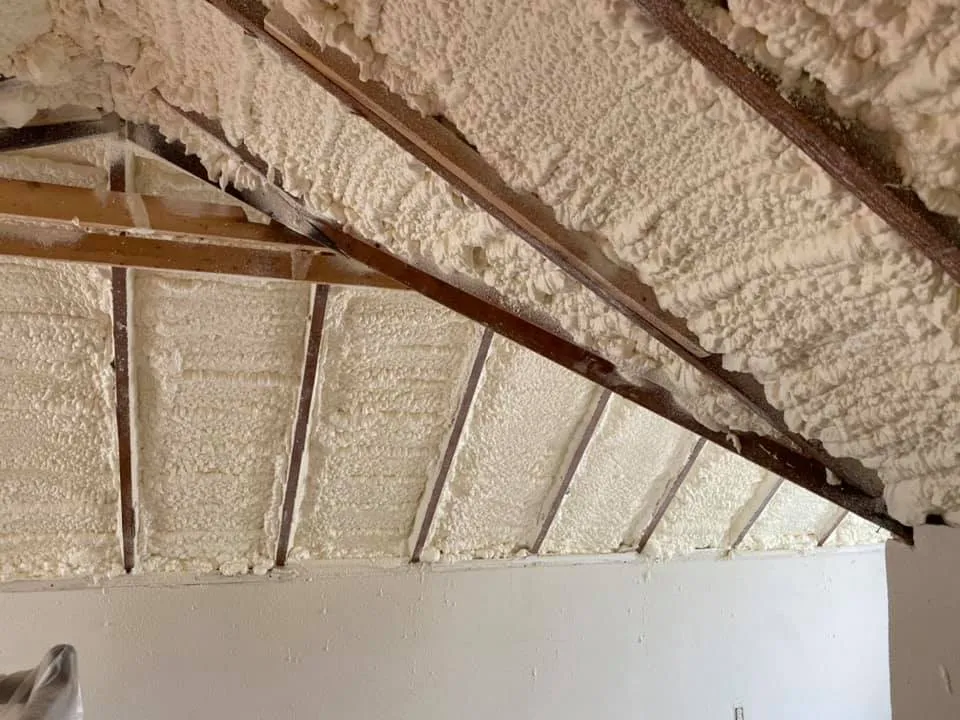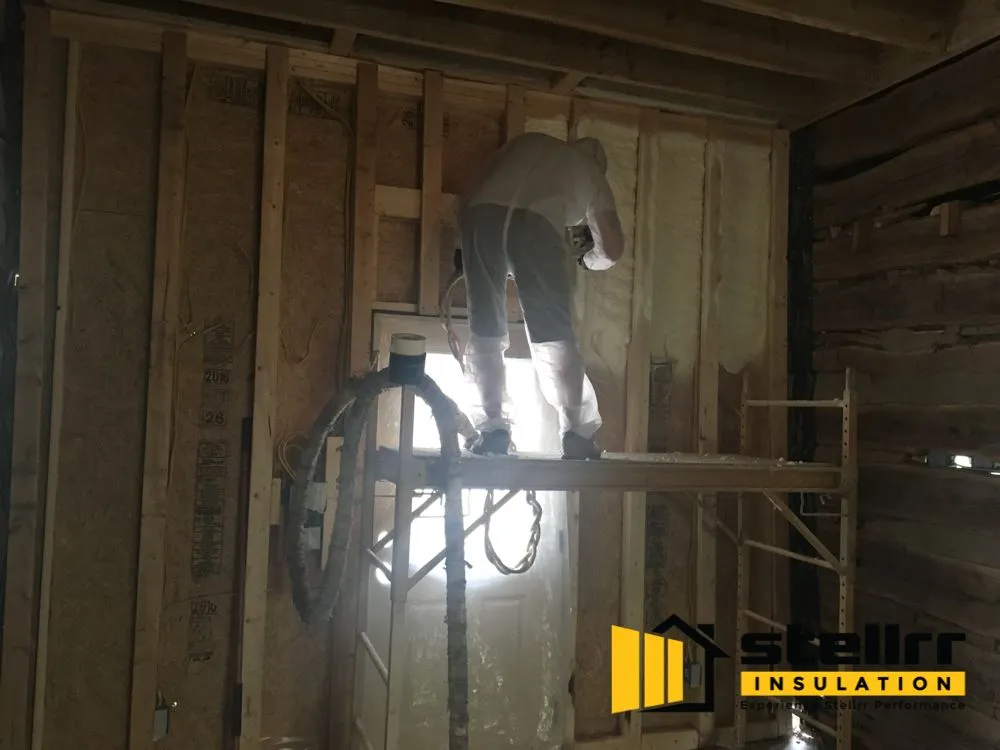Choosing insulation with low embodied carbon and high energy efficiency delivers the largest reduction in a home’s carbon footprint. Cellulose insulation ranks highest in carbon savings due to its recycled content and carbon-sequestering properties. Spray foam insulation, particularly closed cell, delivers strong energy performance but varies in environmental impact based on formulation. Mineral wool and fiberglass are common but less impactful in reducing emissions long-term.
Effective home insulation cuts operational emissions by reducing heating and cooling demand. Pairing low-carbon materials with airtight installation practices significantly improves overall building performance. This breakdown provides technical data and comparisons based on field-tested performance in Central Texas homes and verified product specifications.
Comparing Insulation Materials for Carbon Footprint Reduction
| Insulation Type | Embodied Carbon Score* | R-Value per Inch | Recycled Content | Air Sealing Capability | Estimated Lifespan | VOC Emissions |
|---|---|---|---|---|---|---|
| Cellulose | Very Low | 3.2 – 3.8 | 85%+ | Moderate | 20-30 years | Low |
| Closed Cell Spray Foam | Moderate | 6.0 – 7.0 | <10% | Excellent | 30-50 years | Medium-High |
| Open Cell Spray Foam | Moderate | 3.5 – 3.8 | <10% | Excellent | 20-30 years | Medium |
| Mineral Wool | Low | 3.0 – 3.3 | ~70% | Low | 30+ years | Low |
| Fiberglass Batt | Low | 2.9 – 3.3 | ~50% | Low | 20-30 years | Low |
Technical Specifications at a Glance
| Property | Cellulose | Spray Foam (Closed) | Spray Foam (Open) | Mineral Wool | Fiberglass |
|---|---|---|---|---|---|
| Thermal Resistance (R/in) | 3.2 – 3.8 | 6.0 – 7.0 | 3.5 – 3.8 | 3.0 – 3.3 | 2.9 – 3.3 |
| Vapor Permeability | Moderate | Low | High | Moderate | Moderate |
| Flame Resistance | Good | Excellent | Excellent | Excellent | Moderate |
| Water Resistance | Low | High | Low | High | Low |
| Application Method | Blown-in | Spray | Spray | Batts or Boards | Batts |
Key Insights from the Field
Cellulose Offers Highest Carbon Reduction
Made from recycled paper treated with borate for fire resistance, cellulose insulation stores more carbon than it emits in production. Installation avoids high energy processing. Works well in attics and walls where air sealing needs are moderate.
Bonus Tip: Dense-pack cellulose in walls combined with attic air sealing can match or exceed foam performance without petrochemical content.
Spray Foam Delivers Airtightness but Raises Embodied Carbon
Closed cell foam provides unmatched air and moisture sealing. The downside is its higher manufacturing footprint, especially when made with older blowing agents. New HFO-based formulations reduce global warming potential (GWP).
Mineral Wool Performs Consistently Without VOCs
Inorganic and naturally fire-resistant, mineral wool is a stable option with solid acoustic and thermal performance. Lower embodied carbon than spray foam but with gaps in air sealing.
Fiberglass Batt Is Common but Less Effective for Carbon Goals
Although inexpensive and widely used, fiberglass often performs poorly due to installation gaps. Lower embodied carbon is offset by its reduced thermal effectiveness in practice.

Things to Consider Before Making a Decision
- Climate Compatibility: In hot, humid zones like Central Texas, moisture control is critical. Vapor-impermeable insulation such as closed cell foam works well for crawlspaces and unvented attics.
- Air Sealing Needs: Older homes with many penetrations benefit most from spray-applied systems that seal gaps during installation.
- Budget vs Impact: Cellulose is cost-effective with high carbon savings. Spray foam costs more but offers better energy performance in specific applications.
- Installation Access: Retrofitting tight cavities favors blown-in or spray-applied solutions.
- Longevity and Maintenance: Materials like mineral wool and closed cell foam have longer lifespans and need less maintenance.
Services That Align With Carbon Reduction Goals
- Open Cell Insulation: Used in interior wall cavities for sound control and moderate thermal resistance.
- Closed Cell Insulation: Ideal for crawlspaces, attics, and exterior walls where air sealing and moisture resistance are needed.
- Cellulose Insulation: Best for attic floors and wall cavities where recycled material and carbon savings are a priority.
- Insulation Removal: Clears degraded or ineffective insulation before applying high-performance alternatives.
Common Questions Before Choosing Insulation
How do I know which insulation reduces emissions the most?
Compare both R-value and embodied carbon. Choose materials with recycled content and low GWP blowing agents.
Can insulation be upgraded in stages?
Yes. Begin with attic insulation and air sealing. Wall cavities and crawlspaces can follow.
Is cellulose safe from pests and fire?
Treated cellulose resists fire and pests due to borate additives.
Do I need to remove old insulation before adding new?
Often, yes. Removal prevents compression and allows thorough sealing.
Get Expert Insulation Guidance
Making informed decisions about home insulation improves indoor comfort and cuts emissions. For technical support, installation advice, or material insights:
Contact Stellrr:
Email: info@stellrr.com
Phone: (512) 710-2839
Frequently Asked Questions
How long does it take for insulation to offset its carbon footprint?
Cellulose may offset its embodied carbon in under a year. Spray foam may take 5-10 years, depending on usage and formulation.
Which insulation handles Texas humidity best?
Closed cell spray foam. Its vapor resistance and air sealing protect against moisture buildup.
How can installation affect environmental performance?
Gaps, compression, and poor coverage reduce thermal performance. Professional installation maximizes impact.
Are high-performance insulations always worth the cost?
Only in cases where air leakage and moisture control provide energy savings that justify higher upfront cost.
Can multiple insulation types be used in the same home?
Yes. Hybrid approaches often deliver the best balance between performance and sustainability.

